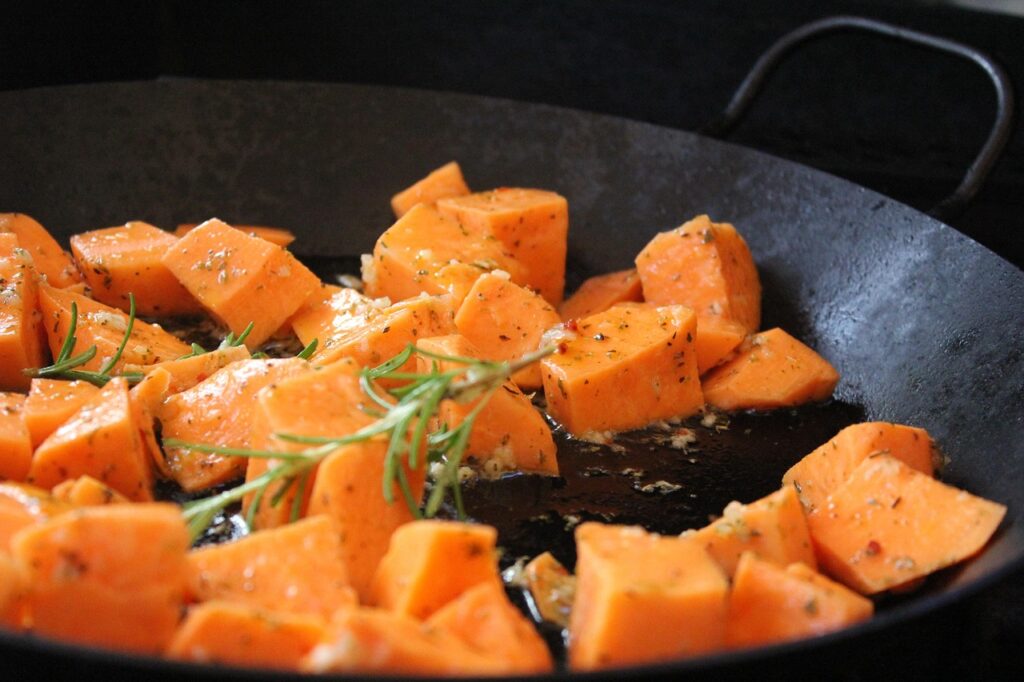
Vitamin A
What is Vitamin A? A fat-soluble vitamin that exists in foods in two forms:
- Preformed Vitamin A (retinol) – found in animal products
- Provitamin A (beta carotene) – found in plant-based foods
To use these forms, the body must convert them to the active forms of the vitamin: retinal and retinoic acid.
Function | Role of Vitamin A |
Vision | Protects the surface of the eye and involved in a part of the retina that responds to light |
Immunity | Supports mucous membranes and immune cells that protect against infections |
Cell growth | Supports skin regeneration and tissue repair |
Reproduction | Important for fetal development and fertility |
Antioxidant | May reduce inflammation, lowering the risk of heart disease, lung cancer and diabetes |
Too Little Vitamin A (rare in developed countries):
- Night blindness
- Dry eyes, skin/hair
- Increased infection risk, especially from measles
- Impaired fetal growth and child development
Groups At Risk for Deficiency:
- Chronic alcoholism
- Premature infants
- Fat malabsorption disorders such as Cystic Fibrosis, Ulcerative Colitis, Chron’s Disease
- Food insecure regions
Too Much Vitamin A:
- Nausea
- Headache, dizziness and coordination problems
- Liver damage, coma, death
- Birth defects if overconsumed in pregnancy
Just Right (adults):
- Beta-carotene from plant foods – generally safe, excess may cause orange skin but not toxicity
- Recommended Daily Allowance: 700-900 retinol activity equivalents (RAE)/day
Medication Interactions
(consult your doctor)
- Orlistat (weight loss)
- Retinoids (skin conditions)
Food Sources
Animal
- Beef liver (consume sparingly)
- Egg Yolks
- Whole Milk, Cheese
- Salmon, Trout
- Cod-liver Oil
- Butter
Plant Based (beta carotene)
- Orange and yellow fruits and vegetables: sweet potatoes, carrots, pumpkin and butternut squash
- Leafy greens: spinach and kale
- Papaya
- Red Bell Peppers
Cooking tips:
- Vitamin A is fat soluble, so its absorption improves when consumed with a little fat (ex: roasting veggies in olive oil or adding nuts/seeds).
- Some fruits and vegetables have significant amounts of nutrients in their skin, so don’t peel carrots or potatoes.
- Heat improves availability of beta carotene in plants. It breaks down the plant’s cell walls, making the carotenoids easier to absorb.
Reference: Vitamin A and Carotenoids – Health Professional Fact Sheet